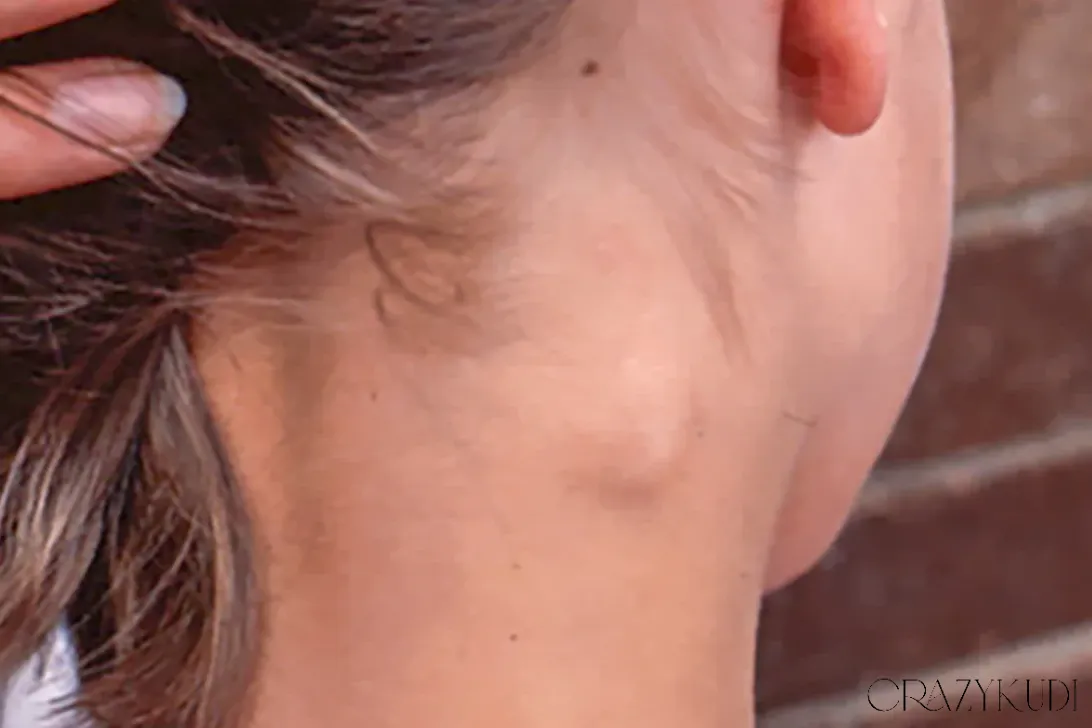Finding an unexpected lump under your skin, especially one that feels firm or hard, naturally raises concerns. As a board-certified dermatologist, this is a common reason patients seek evaluation. While many subcutaneous (under the skin) lumps are benign and harmless, some can indicate underlying issues that require medical attention. The crucial first step is always professional diagnosis – self-diagnosing based on online searches can lead to unnecessary anxiety or dangerous delays in treatment.
Let's explore some of the potential causes for these hard or firm lumps, what characteristics we look for, and importantly, when you absolutely need to have it checked by a doctor.
What Makes a Lump Feel "Hard"?
"Hard" can be subjective, but generally, we're talking about lumps that feel solid, firm, and distinct from the surrounding softer tissue when palpated (gently pressed). They might be fixed in place or slightly movable beneath the skin.
Also read: Seeing Red? A Dermatologist Explains 10 Common Causes of Red Spots on Your Skin
Common Benign Causes of Hard Lumps:
Many hard lumps are non-cancerous. Here are some frequent culprits:
- Cysts (Epidermoid or Pilar):
- What: Sac-like structures lined with skin cells that contain keratin (a cheesy, often foul-smelling material). Epidermoid cysts arise from hair follicles anywhere on the body; pilar cysts arise from the outer root sheath of the hair follicle, most commonly on the scalp.
- Characteristics: Often feel firm, dome-shaped, relatively mobile under the skin. May have a small central opening (punctum). Can become inflamed, red, tender, and even rupture if irritated.
- Concern Level: Generally benign, but can become infected or inflamed. Removal (excision) is often done for cosmetic reasons or if they become problematic.
- Dermatofibroma:
- What: A common, harmless fibrous nodule often resulting from a minor injury like an insect bite or shaving nick, though the exact cause isn't always known.
- Characteristics: Very firm, small (usually under 1 cm) bump. Often feels like a hard pebble under the skin. Characteristically dimples inward when pinched ("dimple sign"). Most common on the lower legs but can occur elsewhere. Can be skin-colored, pink, or brownish.
- Concern Level: Benign. Usually require no treatment unless symptomatic (itchy, tender) or cosmetically bothersome.
- Lipoma:
- What: A benign tumor composed of fatty tissue.
- Characteristics: Typically soft and rubbery, but deeper lipomas or those encapsulated tightly by connective tissue can feel deceptively firm. Usually slow-growing and movable under the skin. Painless unless pressing on a nerve.
- Concern Level: Benign. Usually removed only if large, growing rapidly, causing symptoms, or for cosmetic reasons. (Note: While classic lipomas are soft, they are such a common lump that they're worth mentioning, clarifying that firmness can vary).
- Swollen Lymph Nodes (Lymphadenopathy):
- What: Lymph nodes are small glands part of the immune system. They can swell and feel firm when fighting infection, inflammation, or (less commonly) due to cancer.
- Characteristics: Often feel firm, oval-shaped, and may be tender or painful, especially if due to infection. Located in specific areas like the neck, under the chin, armpits, and groin. Usually resolves as the underlying condition improves.
- Concern Level: Often related to temporary infection. However, persistently swollen, hard, painless, or fixed lymph nodes require prompt medical evaluation to rule out serious causes like lymphoma or metastatic cancer.
- Keloid or Hypertrophic Scar:
- What: Overgrowth of dense fibrous tissue that develops after skin injury (surgery, piercing, acne, burn). Hypertrophic scars stay within the boundaries of the original wound; keloids extend beyond them.
- Characteristics: Feel very firm, rubbery, or hard. Raised above the skin surface. Can be itchy or tender. Common in predisposed individuals and certain body locations (chest, shoulders, earlobes).
- Concern Level: Benign, primarily a cosmetic concern, but can be symptomatic. Various treatments (steroid injections, silicone sheeting, laser) can help flatten and soften them.

- Ganglion Cyst:
- What: A non-cancerous, fluid-filled lump that typically occurs near joints or tendons, most commonly on the wrists, hands, or feet.
- Characteristics: Can feel quite firm or rubbery. Size can fluctuate. May or may not be painful.
- Concern Level: Benign. Treatment (aspiration, surgery) may be considered if causing pain or limiting function.
- Pilomatricoma:
- What: A benign hair follicle tumor.
- Characteristics: Often feels very hard, like a small stone or piece of calcium under the skin. Usually occurs in children and young adults, often on the head, neck, or arms. Skin overlying may have a bluish tinge.
- Concern Level: Benign, but often surgically removed for diagnosis and cosmetic reasons.
Less Common or Potentially Concerning Causes:
- Abscess: A collection of pus due to infection. Can feel firm initially before becoming fluctuant (feeling fluid-filled). Usually associated with redness, warmth, and significant pain. Requires drainage and often antibiotics.
- Rheumatoid Nodules: Firm lumps under the skin, often near joints, seen in some people with rheumatoid arthritis.
- Metastatic Cancer: Cancer that has spread from another part of the body to the skin. These nodules are often very hard, fixed (not movable), and grow progressively.
- Primary Skin Cancer: While many skin cancers are superficial, some types (like certain squamous cell carcinomas, Merkel cell carcinoma, or rare sarcomas) can present as firm or hard nodules.
- Lymphoma Cutis: Lymphoma (cancer of the lymphatic system) involving the skin can present as firm nodules or plaques.
When to See a Doctor IMMEDIATELY:
While many hard lumps are benign, certain features are red flags that warrant prompt medical evaluation by a dermatologist or primary care physician:
- Rapid Growth: The lump is increasing in size quickly.
- Pain or Tenderness: Especially if new or worsening.
- Fixed Position: The lump feels stuck to underlying tissues and doesn't move freely under the skin.
- Hard, Irregular Consistency: Feels rock-hard or has uneven edges.
- Changes in Overlying Skin: Redness, bruising, dimpling, ulceration, sores that won't heal, or visible changes on the skin surface over the lump.
- Associated Symptoms: Fever, unexplained weight loss, night sweats, fatigue (could indicate infection or malignancy).
- Location: Persistently swollen lymph nodes without a clear cause.
Also read: Scar Treatments Unveiled: A Dermatologist Compares Professional Procedures and Natural Options
The Diagnostic Process:
When you see a dermatologist about a hard lump, we will:
- Take a Detailed History: Ask about when you noticed it, any changes, symptoms, personal/family history of skin cancer or other conditions.
- Perform a Physical Examination: Carefully feel the lump (palpation) to assess its size, shape, consistency, mobility, and tenderness, and examine the overlying skin.
- Consider Further Tests (If Needed): Depending on the suspicion, this might include:
- Ultrasound: Can help determine if a lump is cystic (fluid-filled) or solid.
- Biopsy: Taking a small sample (or removing the entire lump) for microscopic examination. This is the definitive way to diagnose many lumps.
- Referral: Consultation with other specialists (e.g., surgeon, oncologist) may be necessary.
Conclusion: Don't Guess, Get it Checked
Discovering a hard lump under your skin requires attention, but not necessarily panic. Many common causes are entirely benign. However, because of the small possibility of infection, inflammation, or malignancy, never ignore a new, changing, or persistent hard lump. Schedule an appointment with a board-certified dermatologist or your primary care doctor for an accurate diagnosis and appropriate management plan. Early evaluation leads to peace of mind or timely treatment if needed.

